 |
 |
Our enthusiastic and extremely knowledgeable perennials team is here to answer your questions and help you choose the best perennials for your situation. There’s always something in bloom for sun, shade, butterflies, birds or deer resistance as well as a variety of bulbs for your space.
Stroll through our time-tested favorites and introduce yourself to the newest varieties. We garden with perennials too; we love them and it shows!
|
22 found, showing page 1 of 2
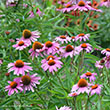
Plant Height: 24 inches
Flower Height: 3 feet
Spread: 24 inches
Sunlight: full sun
Hardiness Zone: 3a
Other Names: Purple Coneflower
Description:
Vigorous growth with excellent heat and drought tolerance, this variety features beautiful large, and bold fuchsia colored petals surround a coppery-orange cone; easy to grow, excellent for borders, beds, containers or wildflower and cutting gardens
Ornamental Features:
Magnus Coneflower has masses of beautiful lightly-scented fuchsia daisy flowers with coppery-bronze eyes at the ends of the stems from mid summer to mid fall, which are most effective when planted in groupings. The flowers are excellent for cutting. Its large pointy leaves remain green in color throughout the season.
Landscape Attributes:
Magnus Coneflower is an herbaceous perennial with an upright spreading habit of growth. Its medium texture blends into the garden, but can always be balanced by a couple of finer or coarser plants for an effective composition.
This is a relatively low maintenance plant, and is best cleaned up in early spring before it resumes active growth for the season. It is a good choice for attracting butterflies to your yard, but is not particularly attractive to deer who tend to leave it alone in favor of tastier treats. It has no significant negative characteristics.
Magnus Coneflower is recommended for the following landscape applications:
- Mass Planting
- Border Edging
- General Garden Use
- Container Planting
Planting & Growing:
Magnus Coneflower will grow to be about 24 inches tall at maturity extending to 3 feet tall with the flowers, with a spread of 24 inches. It grows at a medium rate, and under ideal conditions can be expected to live for approximately 10 years. As an herbaceous perennial, this plant will usually die back to the crown each winter, and will regrow from the base each spring. Be careful not to disturb the crown in late winter when it may not be readily seen!
This plant should only be grown in full sunlight. It is very adaptable to both dry and moist locations, and should do just fine under typical garden conditions. It is considered to be drought-tolerant, and thus makes an ideal choice for a low-water garden or xeriscape application. It is not particular as to soil type or pH. It is highly tolerant of urban pollution and will even thrive in inner city environments. This is a selection of a native North American species. It can be propagated by division; however, as a cultivated variety, be aware that it may be subject to certain restrictions or prohibitions on propagation.
Magnus Coneflower is a fine choice for the garden, but it is also a good selection for planting in outdoor pots and containers. With its upright habit of growth, it is best suited for use as a 'thriller' in the 'spiller-thriller-filler' container combination; plant it near the center of the pot, surrounded by smaller plants and those that spill over the edges. It is even sizeable enough that it can be grown alone in a suitable container. Note that when growing plants in outdoor containers and baskets, they may require more frequent waterings than they would in the yard or garden.

Plant Height: 24 inches
Flower Height: 32 inches
Spread: 24 inches
Sunlight: full sun
Hardiness Zone: 3a
Description:
Heat and drought tolerant, this easy to care for selection features elegant pure white petals, surrounding a large coppery-brown central cone; vigorous growth, great for borders, beds or wildflower and cutting gardens
Ornamental Features:
White Swan Coneflower has masses of beautiful lightly-scented white daisy flowers with brown eyes at the ends of the stems from mid summer to mid fall, which are most effective when planted in groupings. The flowers are excellent for cutting. Its pointy leaves remain green in color throughout the season.
Landscape Attributes:
White Swan Coneflower is an herbaceous perennial with an upright spreading habit of growth. Its medium texture blends into the garden, but can always be balanced by a couple of finer or coarser plants for an effective composition.
This is a relatively low maintenance plant, and is best cleaned up in early spring before it resumes active growth for the season. It is a good choice for attracting butterflies to your yard, but is not particularly attractive to deer who tend to leave it alone in favor of tastier treats. It has no significant negative characteristics.
White Swan Coneflower is recommended for the following landscape applications:
- Mass Planting
- Border Edging
- General Garden Use
- Container Planting
Planting & Growing:
White Swan Coneflower will grow to be about 24 inches tall at maturity extending to 32 inches tall with the flowers, with a spread of 24 inches. It grows at a medium rate, and under ideal conditions can be expected to live for approximately 10 years. As an herbaceous perennial, this plant will usually die back to the crown each winter, and will regrow from the base each spring. Be careful not to disturb the crown in late winter when it may not be readily seen!
This plant should only be grown in full sunlight. It is very adaptable to both dry and moist locations, and should do just fine under typical garden conditions. It is considered to be drought-tolerant, and thus makes an ideal choice for a low-water garden or xeriscape application. It is not particular as to soil type or pH. It is highly tolerant of urban pollution and will even thrive in inner city environments. This is a selection of a native North American species. It can be propagated by division; however, as a cultivated variety, be aware that it may be subject to certain restrictions or prohibitions on propagation.
White Swan Coneflower is a fine choice for the garden, but it is also a good selection for planting in outdoor pots and containers. With its upright habit of growth, it is best suited for use as a 'thriller' in the 'spiller-thriller-filler' container combination; plant it near the center of the pot, surrounded by smaller plants and those that spill over the edges. It is even sizeable enough that it can be grown alone in a suitable container. Note that when growing plants in outdoor containers and baskets, they may require more frequent waterings than they would in the yard or garden.
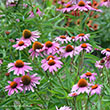
Purple rose flowers surround a maroon cone. Self-seeding and native. Tolerates poor soils. USDA 3-8
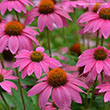
Plant Height: 18 inches
Flower Height: 24 inches
Spread: 18 inches
Sunlight: full sun
Hardiness Zone: 3a
Other Names: Pow Wow Wild Berry Coneflower
Description:
This stunning echinacea produces large purple-pink flowers with coppery centers; a perfect choice for planting in groups, along border edges, or in containers; great for flower arrangements, attracts pollinators
Ornamental Features:
PowWow Wild Berry Coneflower has masses of beautiful lightly-scented hot pink daisy flowers with coppery-bronze eyes at the ends of the stems from mid summer to early fall, which are most effective when planted in groupings. The flowers are excellent for cutting. Its pointy leaves remain green in color throughout the season.
Landscape Attributes:
PowWow Wild Berry Coneflower is an herbaceous perennial with an upright spreading habit of growth. Its medium texture blends into the garden, but can always be balanced by a couple of finer or coarser plants for an effective composition.
This is a relatively low maintenance plant, and is best cleaned up in early spring before it resumes active growth for the season. It is a good choice for attracting birds and butterflies to your yard, but is not particularly attractive to deer who tend to leave it alone in favor of tastier treats. It has no significant negative characteristics.
PowWow Wild Berry Coneflower is recommended for the following landscape applications:
- Mass Planting
- General Garden Use
- Container Planting
Planting & Growing:
PowWow Wild Berry Coneflower will grow to be about 18 inches tall at maturity extending to 24 inches tall with the flowers, with a spread of 18 inches. It grows at a medium rate, and under ideal conditions can be expected to live for approximately 10 years. As an herbaceous perennial, this plant will usually die back to the crown each winter, and will regrow from the base each spring. Be careful not to disturb the crown in late winter when it may not be readily seen!
This plant should only be grown in full sunlight. It is very adaptable to both dry and moist locations, and should do just fine under typical garden conditions. It is considered to be drought-tolerant, and thus makes an ideal choice for a low-water garden or xeriscape application. It is not particular as to soil type or pH. It is highly tolerant of urban pollution and will even thrive in inner city environments. This is a selection of a native North American species. It can be propagated by division; however, as a cultivated variety, be aware that it may be subject to certain restrictions or prohibitions on propagation.
PowWow Wild Berry Coneflower is a fine choice for the garden, but it is also a good selection for planting in outdoor pots and containers. With its upright habit of growth, it is best suited for use as a 'thriller' in the 'spiller-thriller-filler' container combination; plant it near the center of the pot, surrounded by smaller plants and those that spill over the edges. Note that when growing plants in outdoor containers and baskets, they may require more frequent waterings than they would in the yard or garden.
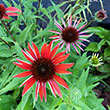
Large red blooms. Clumping. Tolerates heat & poor soils. USDA 3-8

Plant Height: 18 inches
Flower Height: 24 inches
Spread: 18 inches
Sunlight: full sun
Hardiness Zone: 3a
Other Names: Pow Wow Wild Berry Coneflower
Description:
This stunning echinacea produces large purple-pink flowers with coppery centers; a perfect choice for planting in groups, along border edges, or in containers; great for flower arrangements, attracts pollinators
Ornamental Features:
PowWow Wild Berry Coneflower has masses of beautiful lightly-scented hot pink daisy flowers with coppery-bronze eyes at the ends of the stems from mid summer to early fall, which are most effective when planted in groupings. The flowers are excellent for cutting. Its pointy leaves remain green in color throughout the season.
Landscape Attributes:
PowWow Wild Berry Coneflower is an herbaceous perennial with an upright spreading habit of growth. Its medium texture blends into the garden, but can always be balanced by a couple of finer or coarser plants for an effective composition.
This is a relatively low maintenance plant, and is best cleaned up in early spring before it resumes active growth for the season. It is a good choice for attracting birds and butterflies to your yard, but is not particularly attractive to deer who tend to leave it alone in favor of tastier treats. It has no significant negative characteristics.
PowWow Wild Berry Coneflower is recommended for the following landscape applications:
- Mass Planting
- General Garden Use
- Container Planting
Planting & Growing:
PowWow Wild Berry Coneflower will grow to be about 18 inches tall at maturity extending to 24 inches tall with the flowers, with a spread of 18 inches. It grows at a medium rate, and under ideal conditions can be expected to live for approximately 10 years. As an herbaceous perennial, this plant will usually die back to the crown each winter, and will regrow from the base each spring. Be careful not to disturb the crown in late winter when it may not be readily seen!
This plant should only be grown in full sunlight. It is very adaptable to both dry and moist locations, and should do just fine under typical garden conditions. It is considered to be drought-tolerant, and thus makes an ideal choice for a low-water garden or xeriscape application. It is not particular as to soil type or pH. It is highly tolerant of urban pollution and will even thrive in inner city environments. This is a selection of a native North American species. It can be propagated by division; however, as a cultivated variety, be aware that it may be subject to certain restrictions or prohibitions on propagation.
PowWow Wild Berry Coneflower is a fine choice for the garden, but it is also a good selection for planting in outdoor pots and containers. With its upright habit of growth, it is best suited for use as a 'thriller' in the 'spiller-thriller-filler' container combination; plant it near the center of the pot, surrounded by smaller plants and those that spill over the edges. Note that when growing plants in outdoor containers and baskets, they may require more frequent waterings than they would in the yard or garden.
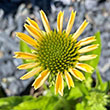
Flowers emerge creamy-white and turn soft-yellow as they age. USDA 4-8
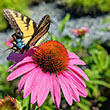
Plant Height: 24 inches
Flower Height: 3 feet
Spread: 24 inches
Sunlight: full sun
Hardiness Zone: 3a
Description:
A long flowering variety producing a profusion of ruby-pink flowers from mid-summer to early fall; a vigorous grower with sturdy stems, it really stands out in the late summer garden
Ornamental Features:
Ruby Star Coneflower has masses of beautiful lightly-scented crimson daisy flowers with brown eyes at the ends of the stems from mid summer to mid fall, which are most effective when planted in groupings. The flowers are excellent for cutting. Its pointy leaves remain green in color throughout the season.
Landscape Attributes:
Ruby Star Coneflower is an herbaceous perennial with an upright spreading habit of growth. Its medium texture blends into the garden, but can always be balanced by a couple of finer or coarser plants for an effective composition.
This is a relatively low maintenance plant, and is best cleaned up in early spring before it resumes active growth for the season. It is a good choice for attracting butterflies to your yard, but is not particularly attractive to deer who tend to leave it alone in favor of tastier treats. It has no significant negative characteristics.
Ruby Star Coneflower is recommended for the following landscape applications:
- Mass Planting
- General Garden Use
- Container Planting
Planting & Growing:
Ruby Star Coneflower will grow to be about 24 inches tall at maturity extending to 3 feet tall with the flowers, with a spread of 24 inches. It grows at a medium rate, and under ideal conditions can be expected to live for approximately 10 years. As an herbaceous perennial, this plant will usually die back to the crown each winter, and will regrow from the base each spring. Be careful not to disturb the crown in late winter when it may not be readily seen!
This plant should only be grown in full sunlight. It is very adaptable to both dry and moist locations, and should do just fine under typical garden conditions. It is considered to be drought-tolerant, and thus makes an ideal choice for a low-water garden or xeriscape application. It is not particular as to soil type or pH. It is highly tolerant of urban pollution and will even thrive in inner city environments. This is a selection of a native North American species. It can be propagated by division; however, as a cultivated variety, be aware that it may be subject to certain restrictions or prohibitions on propagation.
Ruby Star Coneflower is a fine choice for the garden, but it is also a good selection for planting in outdoor pots and containers. With its upright habit of growth, it is best suited for use as a 'thriller' in the 'spiller-thriller-filler' container combination; plant it near the center of the pot, surrounded by smaller plants and those that spill over the edges. It is even sizeable enough that it can be grown alone in a suitable container. Note that when growing plants in outdoor containers and baskets, they may require more frequent waterings than they would in the yard or garden.
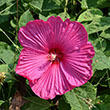
8" deep rose blooms with red eye. Compact. Tolerates wet sites. USDA 5-9
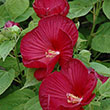
8" deep red blooms. Compact habit. Tolerates wet sites. USDA 5-9
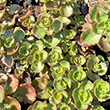
Red blooms. Deep red foliage. Semi-evergreen Groundcover. USDA 4-8
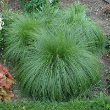
Plant Height: 24 inches
Flower Height: 3 feet
Spread: 3 feet
Sunlight: full sun, partial shade
Hardiness Zone: 2a
Description:
Native to the Great Plains and Prairies, this extremely fine-textured grass features airy plumes of fine seed heads floating over the grassy foliage in the late season; ideal for restoration projects and flowing hummocky accents in the urban landscape
Ornamental Features:
Prairie Dropseed features delicate plumes of orange flowers rising above the foliage from late summer to early fall. The tan seed heads are carried on showy plumes displayed in abundance from early to late fall. Its threadlike leaves are light green in color. As an added bonus, the foliage turns a gorgeous harvest gold in the fall.
Landscape Attributes:
Prairie Dropseed is an open herbaceous perennial grass with a shapely form and gracefully arching stems. It brings an extremely fine and delicate texture to the garden composition and should be used to full effect.
This is a relatively low maintenance plant, and is best cleaned up in early spring before it resumes active growth for the season. Deer don't particularly care for this plant and will usually leave it alone in favor of tastier treats. It has no significant negative characteristics.
Prairie Dropseed is recommended for the following landscape applications:
- Mass Planting
- General Garden Use
- Naturalizing And Woodland Gardens
Planting & Growing:
Prairie Dropseed will grow to be about 24 inches tall at maturity extending to 3 feet tall with the flowers, with a spread of 3 feet. Its foliage tends to remain dense right to the ground, not requiring facer plants in front. It grows at a medium rate, and under ideal conditions can be expected to live for approximately 10 years. As an herbaceous perennial, this plant will usually die back to the crown each winter, and will regrow from the base each spring. Be careful not to disturb the crown in late winter when it may not be readily seen!
This plant does best in full sun to partial shade. It is very adaptable to both dry and moist locations, and should do just fine under typical garden conditions. It is considered to be drought-tolerant, and thus makes an ideal choice for a low-water garden or xeriscape application. It is not particular as to soil type or pH, and is able to handle environmental salt. It is somewhat tolerant of urban pollution. This species is native to parts of North America.
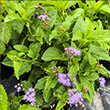
Bright blue minty leaves with purplish stems topped with masses of powder blue fuzzy flowers. Height 2-3'.
Eupatorium attracts bees and butterflies. Needs moisture if grown in full sun. Drought tolerate in shadier sites. Deer and rabbit resistant.
- USDA Hardiness Zone(s): 4-9
- Exposure: Full Sun, Part Shade
- Bloom Time(s): August-October
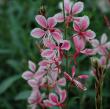
Rose pink blooms on rigid stems. Naturalizing. USDA 5-8 'Siskiyou Pink' prefers full sun and is happy in average to poor, well-drained soil. Wandflower is a tap-rooted perennial so it is very drought tolerant. The tap root makes these difficult to move once they are settled in, so site them carefully.
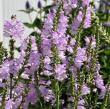
Pink blooms. Compact habit. Slow spreading cultivar. USDA 3-9
22 found, showing page 1 of 2













